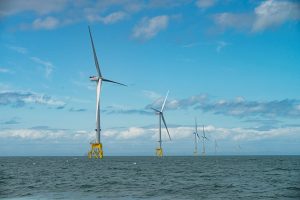“The 12 to 16 gigawatt ambition by 2030, we are not changing that now,” Equinor’s head of renewables, Paal Eitrheim, said in an interview.
On Thursday, the company announced an asset swap with former partner BP for offshore wind projects in the U.S. state of New York, leaving just the 0.8-GW Empire Wind 1 project to go forward at this time.
Advertisement · Scroll to continue
Equinor, like many of its European oil and gas peers, is seeking a foothold in offshore wind, hoping to capitalise on its maritime expertise to access new revenue streams amid future declines in petroleum production.
However rising inflation and interest rates as well as supply chain delays have disrupted a number of U.S. offshore wind projects.
Eitrheim said Equinor’s project pipeline has developed in recent years, allowing it to stick to its target despite the abandoned New York projects.
Advertisement · Scroll to continue
Equinor is seeking better terms for Empire Wind 1 in New York’s latest offshore wind auction, which closed on Thursday, after a previous attempt to agree a better deal failed in October.
It retains the 1.2 GW Empire Wind 2 project, for which it cancelled a power off-take agreement and will take more time to develop.
The new bid has been submitted at a price level that was competitive but would restore profitability, albeit at the lower end of Equinor’s guided real base project return for renewables of 4-8%, Eitrheim said.
“I actually do think that what we announced yesterday is positive news because it will potentially enable us to restore fundamental profitability to a really important project,” he added.
After parting ways with BP, Equinor will eventually seek new co-owners in Empire Wind.
“We are also looking at project financing to reduce exposure and enable bringing in new partners,” Eitrheim said.
But Equinor should be prepared to answer questions on its targets when the company updates on strategy on Feb. 7, Sparebank 1 Markets analyst Teodor Sveen-Nilsen said.
“The deal reduces the company’s renewable capacity by 0.3 GW and makes the 2030 renewable ambition more challenging to meet,” Sveen-Nilsen wrote in a client note.
An alternative way forward for Equinor could be to scrap its entire U.S. offshore wind portfolio and focus instead on onshore wind where profitability is better, he added.
Reporting by Nora Buli, additional reporting by Nerijus Adomaitis, editing by Terje Solsvik and Louise Heavens – Reuters




